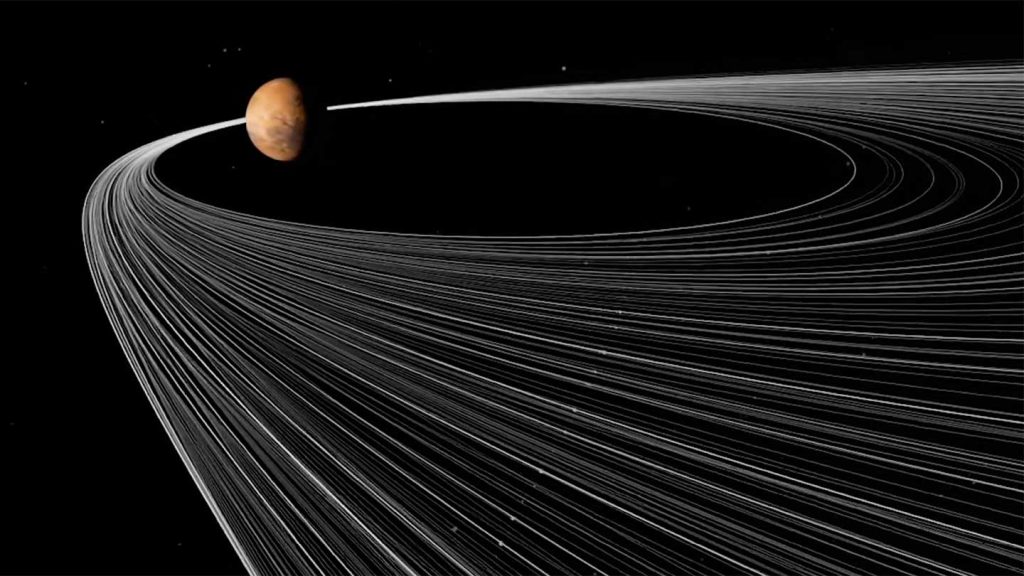Summarize this content to 2000 words in 6 paragraphs
Mars’ moons could be the remains of an ill-starred asteroid that got too close to the Red Planet.
A shredded asteroid origin could help explain mysterious features of the small, odd-shaped moons, scientists suggest in the January issue of Icarus.
Where most moons are big round orbs, Mars’ Phobos and Deimos are small lumpy potatoes.
There are two main ideas for how the moons formed. One is that the moons actually were asteroids that were caught by Mars’s gravity. But that idea doesn’t explain the moons’ circular, stable orbits around Mars’ equator.
Have feedback for Science News?
Help us improve by telling us about your experience
The other is that Phobos and Deimos formed like our own moon, out of the debris of a giant impact (SN: 7/4/16). “That’s one of the few ways to make a big disk to grow moons out of,” says planetary scientist Jacob Kegerreis at NASA’s Ames Research Center in Mountain View, Calif.
Kegerreis and colleagues suggest something in between: Maybe Mars did capture an asteroid, but the planet’s gravity ripped the rock to shreds. The remains could have formed a short-lived ring around the Red Planet. The potato moons could form from there, with circular orbits already in place.
To test the idea, Kegerreis and colleagues ran hundreds of computer simulations of doomed asteroids on their close pass of Mars. Different asteroid sizes, speeds and spins made a big difference to how the rings formed — but rings did form.
“What we were happily finding is that, across a range of conditions, you get a lot of material that could form a disk,” Kegerreis says.
An upcoming mission could help tell which idea is correct. The Japanese space agency’s Mars Moons Exploration mission is scheduled to launch in 2026 with plans to collect surface material from Phobos and bring it back to Earth.
If those samples have compositions similar to Mars, that supports the giant impact hypothesis, Kegerreis says. If they’re more similar to an asteroid or have more water and other compounds that would evaporate in the heat of an impact, then the shredded asteroid hypothesis looks more probable.
Studying these moons could help understand moons around extrasolar planets, too (SN: 1/13/22).
“Even if this isn’t the way Mars’ moons formed in particular, it could be the way moons form around another planet,” Kegerreis says. “Now that we’re finding all these exoplanets and hopefully exomoons, it’s worth it to explore how these things could happen in different solar systems, even if not in this one.”


